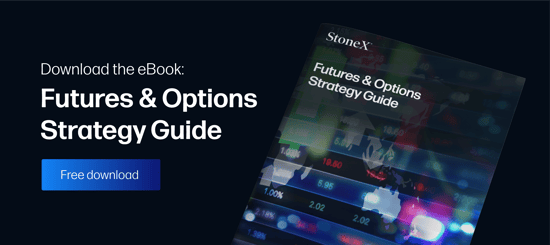All eyes are on the debt market these days. Volatility in the debt market is forcing investors and traders to shift their assets as the global markets spin out of control. News of Greece defaulting on its bonds, the US raising its debt ceiling, and economic activity in the Far East have traders and investors scrambling. One way to take advantage of the changing interest rates and market fluctuation is through trading United States Treasury note and bond futures. Whether using Treasury bond futures to hedge one’s portfolio or speculate on market fluctuation, US debt futures offer an ideal way to take advantage of market volatility and manage risk. Below I will explain some basics of the US debt market, specifications of US Treasury bond futures, and an example of a 30-year Treasury bond future trade.
Debt Market Basics
The United States government has outstanding debt that exceeds 14 trillion dollars. Since 1962 the debt ceiling has been raised 74 times. The United States government issues debt to fund expenditures that exceed revenues. Simply put, the United States debt market exists because of the United States government obligation to its lenders. US government debt levels affect everything in our society. Inflation, interest rates, economic growth, and the taxes that are levied are directly linked to debt levels. The United States dollar is the world’s reserve currency. Further, the United States has never defaulted on a debt payment or failed to meet an obligation on its bonds. For these reason, United States Treasury bonds are considered the safest investment in the world (this also allows the US government to borrow at some of the lowest interest rates in the world).
When there are shocks or bad news in the market, investors flock to the US t-bonds for a safe haven to protect their capital. This is referred to as a “flight to quality” and usually drives interest rates lower. However, when the economy faces good news, investors abandon the safety of Treasury bonds and invest in other products that offer more attractive yields. This causes prices to drop and interest rates to rise. A key factor to understanding bonds is that prices are inverse to rate. When interest rates rise, prices on bonds fall (and vice versa). The higher the price of a bond, the lower the interest rate is on the bond. Safe investments traditionally produce lower yields as investors sacrifice yields for safety.
Traders use Treasury bond futures because they are able to place trades instantly while only needing the proper margin in ones account to place the trade. Traders also have confidence that the exchange guarantees all trades. This is essential for traders to manage risk or speculate on fluctuating interest rates. There may be no other tradable asset that offers such a direct link for exposure to economic events and interest rate exposure with liquidity and transparency.
United State Treasury Bond and Note Specifications
The 30-year bond, 10-year note, and 5-year note are some of the most heavily traded futures contracts in the world. These debt products are traded both electronically and on the trading floor at the Chicago Mercantile Exchange. The futures are based on $100,000 pare values and traded in tics and points. There are 32 tics in each point. Each point is worth $1,000 and each tic is worth $31.25 ($31.25 x 32=$1,000.00). The 5-year note is traded in 1/4 tics ($7.8125) and the 10-year note is traded in 1/2 tics ($15.625).
Any trades are educational examples only. They do not include commissions and fees.
The 30-year t-bond is the traditionally the most volatile contract in the yield curve. Because investors cannot foresee events going forward for 30 years, the contract has the largest price movement. Conversely, the 5-year note is much less volatile as investors are locked into the maturity for a shorter period of time. Long term interest rates can be extremely difficult to forecast and the longer the maturity of the bond, the more affected the bond will be economic events.
Basic Trade Examples
To get a better understanding of how a trade works with Treasury bonds futures, we can follow the story of Trader Pete. Trader Pete is concerned that interest rates have remained low for too long and is concerned that inflation is around the corner. Pete has charted the markets and read research indicating that the economy may be picking up steam. Pete sees that the 30-year Treasury bond is trading at a price of 125 09/32. Technically, Pete sees this as a good level to short the market and his fundamental research of rising economic activity supports this idea. Pete decides to place a trade to sell one US Treasury bond at a price of 125 09/32. Because Pete is discipline he adds a stop loss order at the price of 126 05/32 in the market in the event that his analysis is incorrect.
Any trades are educational examples only. They do not include commissions and fees.
If Pete is correct and inflationary pressure mounts due to improving economic news, the price of Treasury bonds will fall and trader Pete will profit from the trade. Pete sees that the price of Treasury bond futures has fallen to 122 17/32 and decides to close his position out for a profit of $2,750 (minus commissions). However, if Pete is incorrect and the economy remains sluggish and actually gets worse, Treasury bond prices will rise. Because Pete has a stop above the market at 126 05/32 he will be stopped out losing $625.00 (plus commissions).
Summary
Treasury bond futures are an excellent way for investors, hedgers, and traders to manage risk and get the exposure to changing economic events that affect everyone in our society. They offer the flexibility of trading from the short side or long side while offering market access and liquidity. Treasury bond futures offer traders the ability to trade and take advantage of world events, and understanding the characteristics of this asset class is important.
